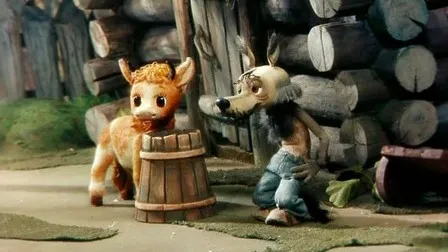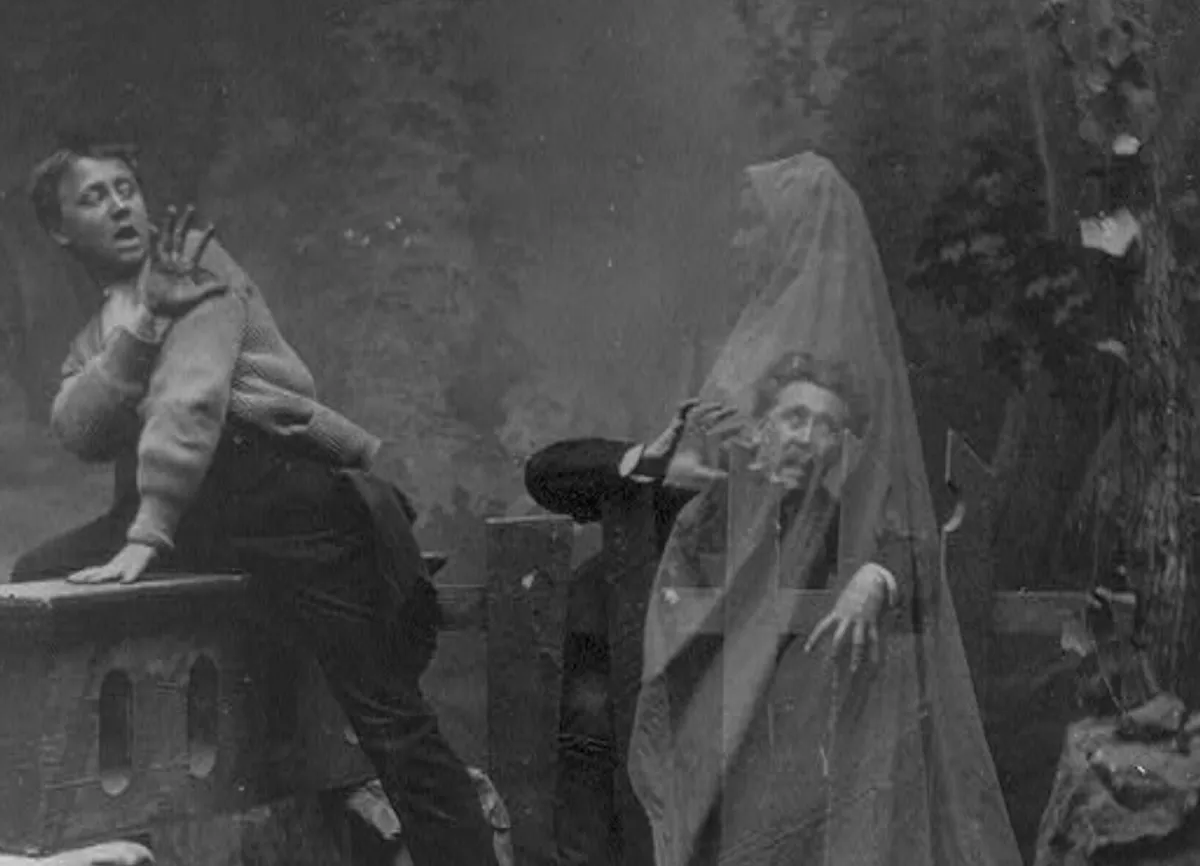Stop motion animation has taken a back seat due to today’s animated medium of choice: 3D, a phenomenon that has taken the film industry by storm. Besides the stop motion films of Tim Burton and the classic Rankin/Bass holiday specials we all know and love, stop motion animation has been a unique storytelling platform for artists around the world for decades. Little known or underrated stop motion artists have experimented with the use of puppets and their ability to bring the inanimate to life. Whether you’ve heard of some of these short films from a film course, just happen to enjoy the magic of the craft and are obsessed with some of these films, or never even saw some of these, there are many more films that are just as innovative and creative. Let us know some of your favorites!
Alice by Jan Svankmajer
This late ‘80s film is a mixture of live action and stop motion animation. Renowned Czech artist Jan Svankmajer’s adaptation of Lewis Carroll’s Alice in Wonderland is interpreted in a disturbing yet fascinating visual experience. The film begins with Alice following the White Rabbit, but in this version the White Rabbit is taxidermal, leaping out of his glass display case and leading Alice into Wonderland. The White Rabbit is sadistically evil; he happily complies to the Queen of Heart’s deplorable demand of “off with his head” by taking out his trusty scissors and cutting off the heads of fellow Wonderland inhabitants — including a wind-up March Hare doll and Mad Hatter puppet. Alice is also a victim of his abuse when she is stuck — or rather, hiding — in a doll house as she tries to dodge the rocks he is throwing at her for hurting his skull-headed lizard friend Bill. There are a number of interesting nuances, including Alice being turned into a doll, being forced to fall into a bowl of milk, the creatures being made up of saw dust, and the fact that Alice plays both protagonist and narrator. When Alice wakes up, she finds that the glass case that contained the stuffed rabbit is empty and finds his scissors hidden in a drawer.
Svankmajer’s stop-motion films are both clever and complex, leaving much open to interpretation. As there are many other short stop motion films made by Svankmajer, and a number he has collaborated on with other up-and-coming artists, it couldn’t go without saying that a certain staff member of The Mary Sue (*cough* Susana Polo) couldn’t help but revel in a Svankmajer short that involved two pieces of meat “getting it on” so to speak — no, that is exactly what they do. Editor’s Note: But they are ADORABLY DISGUSTING!
The Pirate (Pirat) by Jan Bubenícek
Made in 2002, director/animator Jans Bubenícek’s Pirat follows the story of an old, drunk pirate. This short is mainly a silent film from Prague that has a wonderful cleverness to it. The old, bitter pirate lives alone on his boat, using his hook arm as a fishing rod and tormenting the seagulls above with scraps of food. The old pirate is constantly inebriated due to the fact that his endless supply of rum is conveniently found at the bottom of the ocean in a sunken ship. In the beginning we discover the reason for this pirate’s drunken ways: as a cabin boy, his beloved pet fish was flushed down the toilet by his cruel captain. Whenever his rum supply runs out he effortlessly dives down to fetch some more (something Captain Jack Sparrow would do), until he encounters a giant octopus.
Soon, the two find themselves quarreling, and the octopus reaches his boiling point when he watches the pirate recklessly kill fish and seagulls as his food source. The octopus becomes livid and is about to consume the pirate when a whale comes to the pirate’s aid. And, since this is foreign and I’m going on a hunch, the whale says the same name that the pirate used to call him as a fish (yes, the fish that was flushed down the toilet turned into a whale … just go with it). The two are reunited and everything is hunky-dory … until — and this is the sick part — we see the pirate sitting, laughing and burping on an island. As our smug friend points out, we find that the whale’s body has been sawed in two and turned into his lunch.
Noah’s Ark by Walt Disney
Yes, even the animators at Disney had their shot at stop motion animation. The 1959 short takes on the biblical story of “Noah’s Ark,” with Disney lending its usual bouncy and wholesome charm and whit. The short film mainly follows a sing-song narration which is in the vernacular Disney musical style. What really makes this stop motion interesting is the material used to make all the animals. It almost seems as if Walt Disney himself pulled open his junk drawer, grabbed some odd doohickeys, and there you have it: Noah’s animals. Watch closely as the animals march into the ark, two by two: pencils are used as beaks, sporks become antlers, pipe cleaners are the necks of ostriches and horses’ manes. Even the opening credits are entertaining, as God Himself creatively presents the credits in a DIY crafty manner. Oh, the things one can do with a glue gun.
The Demon (Oni) by Kihachirō Kawamoto
Japan’s great puppet animators sought guidance and influence from the great Czech stop motion artists redefining the industry. Kihachirō Kawamoto spent time studying under such artists and eventually gained the world’s attention for his haunting yet beautiful storytelling and puppetry. In The Demon, the narration is silent but corresponding text cuts in between the action, just like silent films of yesteryear. The music and the movement of the puppets demonstrates the emotion and feel of the story; the figures move in conjunction with the speed and urgency of the music signifying moments of fear and hostility.
The story begins with an old woman lying in bed surveying her miserable life. Her two sons let their mother know that they are going on a hunt. As the brothers embark on their midnight pursuit, one brother keeps feeling like something is following them. When they finally find a spot to wait for their prey, a hand comes out of nowhere grabbing one of the brothers. The brother who is free manages to shoot an arrow at the attacker, severing the hand that was visible. They determine that the hand belongs to a demon and run home to tell their mother. When they finally get there, the mother is crawling and bleeding on the floor — missing an arm! She quickly turns into a demon and takes her leave. According to a 12th century Japanese tale, when a parent becomes too old and can’t handle this truth, they evidently turn into demons.
The Hunchbacks of Damascus by Jan Balej, Aurel Klimt, Bretislav Pojar, Vlasta Pospísilová
Another Czech film, The Hunchbacks of Damascus was featured alongside three other fairy tale-type stories in a film anthology entitled Fimfárum 2. The tales were directed by the well-versed Bretislav Pojar and co-written, and narrated, by Czech actor Jan Werich (who was originally cast to play the villain Ernst Stavro Blofeld in the James Bond movie You Only Live Twice, but according to the director, his English was too poor and the fact that he resembled Santa Claus wouldn’t sit well with the audience).
The hunchbacks are brothers: Inad, Babekan, and Syahook. All three are very skilled sword-makers, but are constantly ridiculed by the villagers for their deformed appearance. The brothers are then cast out of Damascus when one of them murders a local for taunting him; a witness couldn’t tell which one did it, since all three are terribly deformed, so they are all ousted. They soon decide to go their separate ways since they feel that being together brings more jeering. Babekan finds himself a job as a swordsmith in Baghdad, marries the wife of his boss upon his death, and becomes wealthy. The other two brothers hear of his sudden good fortune and ask for some money. In an attempt to get more from their brother, Inad and Syahook stand in front of his house until they are invited inside by his wife. When Babekan returns home suddenly from a trip, she urges the two brothers to hide in the cellar … until they start to become so drunk that she decides to hire a man to get rid of them. The two drunk brothers are thrown into the Tigris — including Babekan in an unfortunate turn of events. In the end, they all find themselves in front of the easily amused Khalif Wattik-Billah, who unknowingly took the brothers — who were in sacks — thinking they were fish. All three brothers learn their lesson as the Khalif assures them that they should always be together and grants them many riches for their years of ridicule.
Wolf and Calf by Mikhail Kamenetsky
If Pirat left you feeling a bit uneasy, then this one will make up for it. Russian animation has remained a highly respected craft, with the golden age of the Soyuzmultfilm animation studio adding a puppet and paper cutout stop motion department in the 1950s. In Wolf and Calf, the puppets and environment are masterly created giving the short a rustic Russian feel.
This heartwarming tale begins with a wolf returning to his home with a calf. Intending to eat the calf, the wolf’s intentions change once he hears it stir, cooing and asking for food. As the story progresses, the wolf becomes attached to the calf as he constantly searches for food to feed his ever-growing adopted son. But, his curious neighbors sporadicly pop up, interested in his fattened calf. The wolf assures all of them that once he is at his peak suppleness, he will share with all of them — intentionally stalling and ignoring the fact that he cares for the calf. Growing impatient, the neighbors decide to finally eat the calf; the wolf hides him in the house until the calf, now a fully grown bull, charges on all of them. In a joyous embrace, the bull jumps into his adopted father’s arms and all is well. This one will seriously pluck at those heart strings!
(Photo via Mubi)







